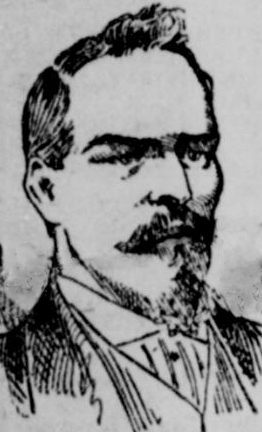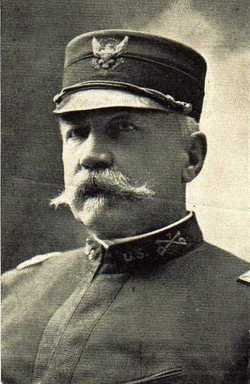Battle of Fairfield facts for kids
Quick facts for kids Battle of Fairfield near Fairfield Gap |
|||||||
|---|---|---|---|---|---|---|---|
| Part of the American Civil War | |||||||
|
|||||||
| Belligerents | |||||||
| Commanders and leaders | |||||||
| Samuel H. Starr | William E. "Grumble" Jones | ||||||
| Strength | |||||||
| 400 | 1050 (estimated) | ||||||
| Casualties and losses | |||||||
| 242 (6 killed, 28 wounded, 208 missing) | 34 (8 killed, 21 wounded, and 5 missing) | ||||||
The Battle of Fairfield was a small but important cavalry fight during the Gettysburg Campaign of the American Civil War. It happened on July 3, 1863, near Fairfield, Pennsylvania. This battle took place at the same time as the much larger Battle of Gettysburg, but it wasn't officially part of it. Even though only a few soldiers fought here, the Confederate victory was very important. It helped secure the main road called Hagerstown Road. This road was later used by General Robert E. Lee's army to safely return to Maryland and then to Virginia after the Battle of Gettysburg.
Contents
Why the Battle of Fairfield Happened
Fairfield had seen some fighting before this battle. On June 21, a group of Confederate cavalry had raided the area. They fought briefly with a Union cavalry group before leaving.
Confederate Cavalry's Role in the War
During the Gettysburg Campaign, many Confederate cavalry units were with General J.E.B. Stuart. He was riding around the Union forces. But General Lee kept some cavalry brigades to guard mountain passes. These units also scouted for Union positions. One of these brigades was led by General William E. "Grumble" Jones. His brigade was famous and had once been led by Turner Ashby.
Jones's brigade had been raiding railroads in West Virginia and Maryland. General Lee then called them back to Pennsylvania. They crossed the Potomac River on July 1 and camped near Chambersburg. Jones's force included the 6th, 7th, and 11th Virginia Cavalry regiments, plus Preston Chew's artillery. General Jones reached Fairfield on July 3. He was following Lee's orders to make sure the important Hagerstown Road was safe.
Union Cavalry's Mission
Meanwhile, the Union General Wesley Merritt heard about a slow-moving Confederate wagon train nearby. He ordered the 6th U.S. Cavalry, led by Major Samuel H. Starr, to check out Fairfield and find these wagons. When Major Starr arrived in Fairfield, he learned that a wagon train had just left town. It was heading towards Cashtown. He split his 400 men into three groups to search for the wagons.
The Battle Unfolds
One Union group soon met Confederate guards from Jones's 7th Virginia Cavalry. They pulled back when more Confederates arrived. Major Starr learned about the enemy's presence. He rode to a small ridge and had his soldiers get off their horses. They spread out in fields and an orchard on both sides of the road.
First Attacks and Counterattacks
The Union soldiers fought back a mounted charge from the 7th Virginia. At the same time, Chew's Battery set up their cannons and started firing at the Union cavalry. The 7th Virginia, now supported by the 6th Virginia, charged again. This time, they pushed Starr's forces off the ridge. The Union side suffered many losses. Jones chased the retreating Union soldiers for three miles towards the Fairfield Gap. However, he couldn't catch them.
After the Battle
The Union forces had 6 soldiers killed, 28 wounded, and 208 missing. Most of the missing were captured. The Confederates had 8 killed, 21 wounded, and 5 missing.
General Jones camped near Fairfield. He kept the Hagerstown Road open for General Lee's army to retreat. Then, Jones's men guarded the rear of Lee's army. Lee's soldiers marched through the Fairfield Gap in heavy rain on July 5.
A Hero's Story: The Medal of Honor
Private George C. Platt was an Irish immigrant serving in the 6th U.S. Cavalry. He was awarded the Medal of Honor on July 12, 1895, for his brave actions at Fairfield. His award says he "Seized the regimental flag upon the death of the standard bearer in a hand-to-hand fight and prevented it from falling into the hands of the enemy." This means he grabbed his unit's flag when the soldier carrying it was killed, stopping the enemy from taking it. His commander was Lieutenant Louis H. Carpender. Carpender also received the Medal of Honor later for his actions in the Indian wars.
Caring for the Wounded
After the fighting, many wounded soldiers were cared for in Fairfield town. Major Samuel H. Starr was taken to the home of Sarah Amanda Blythe. It is believed his arm was amputated there. Other buildings, like the Rufus C. Swope House and St. John's Lutheran Church, were also used as hospitals. It is likely that other buildings in town helped care for the injured soldiers too.
Images for kids





